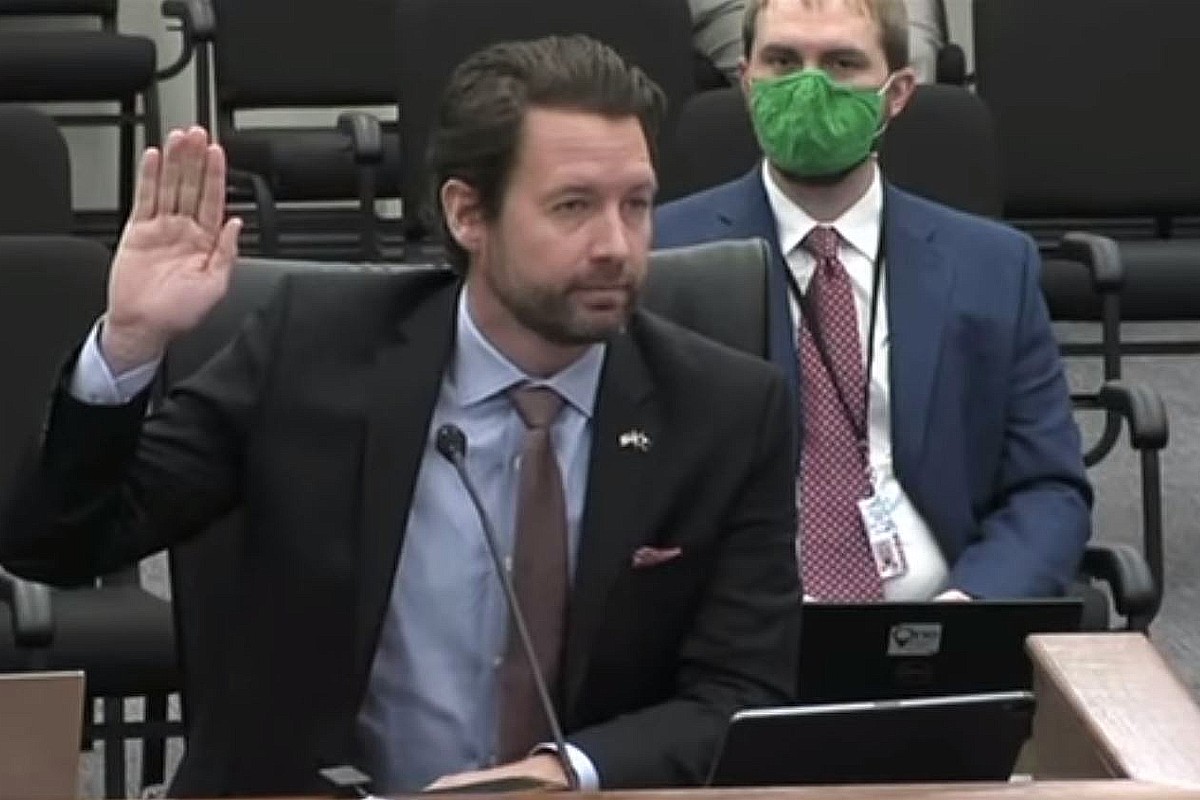
By Andy Brack, a news analysis | As state legislators pushed forward this week on approving new election districts for state House, Senate and congressional seats, new information about the backroom process came to light.
 Every 10 years after a new census, the U.S. Constitution requires reapportionment of election districts — redrawing of the maps to make them fair based on population shifts. But across the country, the people who reconfigure the maps — incumbents and their staffs — are notorious for drawing them in their favor and trying to squeeze out members of the minority party.
Every 10 years after a new census, the U.S. Constitution requires reapportionment of election districts — redrawing of the maps to make them fair based on population shifts. But across the country, the people who reconfigure the maps — incumbents and their staffs — are notorious for drawing them in their favor and trying to squeeze out members of the minority party.
It was no different this year in South Carolina, despite meetings across the state in which state House and Senate members separately listened to the public. In the end, the state Senate offered a new Senate map that roundly was viewed as relatively fair based on demographics and the partisan make-up of the electorate.
But the state House offered a map that was roundly criticized for extending a partisan advantage of Republicans and forcing some Democratic and rural incumbents into battles against each other. The Senate also offered a proposed congressional map that also has been criticized for ignoring partisan changes in the Lowcountry.
The state Senate held a Monday hearing on the proposed congressional map (the House hasn’t yet offered one). On Thursday, House members voted overwhelmingly to approve its map. Both will be in session Monday to continue work on redistricting. Based on this week’s efforts, here’s a rundown of what we learned:
- Not competitive. The new maps generally aren’t competitive, meaning that it’s predictable who or what party will win before any election is held. “Safe” districts are mostly drawn for Republicans or Democrats, even in areas that could have districts configured so that a Republican, Democrat or third-party candidate could win.
The best congressional example is the proposed First District on the coast where a Democrat, Joe Cunningham, won in 2018, but lost in 2020 to now-U.S. Rep. Nancy Mace, a Republican. The proposed district splits Charleston County and makes it a more Republican district, effectively insulating Mace from a Democratic challenge.
“The maps are awful,” Cunningham told the Senate redistricting committee this week. “They make no sense, unless, of course, the sole purpose of these maps is to make it harder for a Republican to lose.” [See video.]
Later, Cunningham, who is running for governor, questioned why senators were afraid of competition, poignantly adding, “If gerrymandering was art, this plan would be a Picasso. Rip up this map. This map isn’t even worth the paper it’s printed on.”
2. Little elected input. When one senator asked how many congressmen offered input into the congressional map, a state Senate staffer said only U.S. Reps. Joe Wilson, a Republican, and Jim Clyburn, a Democrat, gave information before it was drafted. S.C. Sen. Margie Bright Matthews, D-Colleton, complained she wasn’t consulted about the congressional map. According to The State, “No members of the S.C. Senate redistricting committee were apparently consulted” either.
Interestingly, an outside “independent Republican group” did give input, according to published reports. “The folks in Washington, D.C., drawing these maps don’t like competition,” Cunningham said. “They don’t want close elections. They want safe elections.”
3. Harms turnout. Cunningham pointed to how the new maps denigrate democracy, instead of promoting it. In testimony, he said he understood why people thought it wasn’t worth voting these days because the results seemed largely predetermined due to the way the maps are drawn. “They have a damn good point,” he said, according to reporting by The State.
4. Racial bias. The congressional map, in particular, was criticized for how it used race as a factor. According to The Post and Courier, “District 1 would represent the fewest Black residents of South Carolina’s seven seats, at 68 percent white and 17 percent Black, while the population of [Clyburn’s neighboring] District 6 would fall to just below 50 percent Black.”
5. Meaningless “transparency.” While state House and Senate members traveled the state to get public input for mapmaking, Lynn Teague of the League of Women Voters of South Carolina wondered whether the House’s outreach effort was just for show.
“They traveled through the state, but if they actually listened to anything said, it wasn’t evident in the resulting map,” she told Statehouse Report. “No one asked to have their communities like James Island hacked into pieces. No one asked to have all possible districts rendered noncompetitive. … No one in the House actually made any significant effort to respond to any critique of their maps.”
The House and Senate return Monday to continue consideration of new maps.
- Have a comment? Send to: feedback@statehousereport.com.


